The Ridler Award’s First Winner, Now 87, Is Still Building Hot Rods
Nowhere were the good times of the Fabulous Fifties more evident than in Detroit, the town that ate, drank, and slept cars. If you drove northeast on Gratiot Avenue from the heart of Detroit, you would pass the under-construction interstate highway that Eisenhower had ordered and the numerous new car dealerships that dotted the avenue before coming upon Gratiot Auto Supply. The big parts store and speed shop had opened just a few years previous and was growing exponentially as it tried to supply the burgeoning ranks of hot rodders who were hungry for more of everything that made cars go fast.
You would pass shops where young men were building race cars and storefronts where ordinary folk were creating businesses that would help supply parts and equipment for the rapidly growing auto industry. If conditions were right, you might hear the roar of racecars doing battle at Motor City Speedway. For a car guy in the ’50s, there was no better place to be than here, in the capital of the automotive universe—and Al Bergler was a car guy.
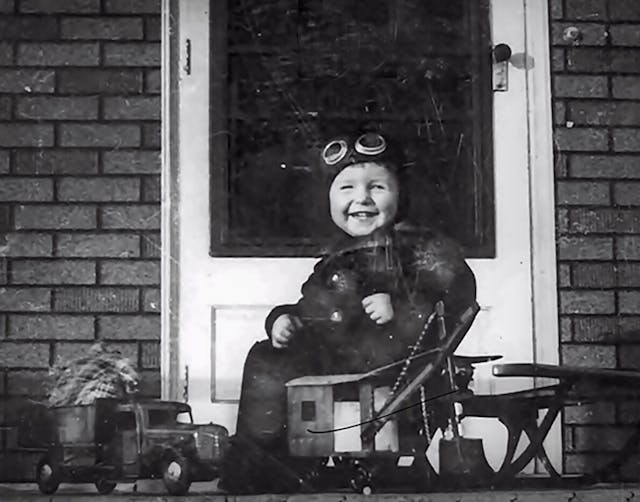
At a used car lot on Gratiot, in 1952, the 16-year-old Detroit native was cleaning and polishing automobiles for 50 cents an hour. It was his second job; his first was selling peanuts and popcorn at the speedway. At the lot, Bergler was close to the action and loving it. Occasionally, he’d get behind the wheel, too: To stock the lot, the owner bought trade-ins from new car dealers all over the city, and Al was part of the crew that would herd the new rolling stock to the lot. “I always looked for the coolest car,” he said, “and then I would drive that one back to the lot.
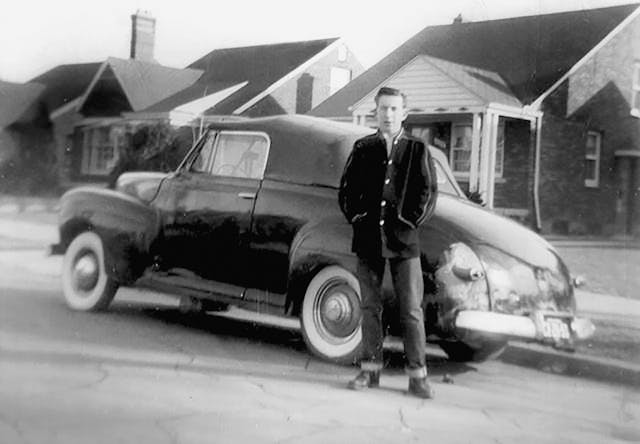
If one of the new acquisitions showed signs of having been driven by a teen, like fender skirts, a spinner knob, or mud flaps, Al would remove the offending parts and add them to his personal hoard of car goodies. When a ’41 Ford convertible rolled into the lot, Al took a shine to it. After borrowing $75 from his grandparents, he bought the car. Thus began a personal love affair with automobiles that still keeps him busy today at a spry and very lucid 87.
When he wasn’t at the used car dealership or cruising with friends, the young Bergler was a student at Pershing High School. However, while the teacher was explaining subordinate clauses, Al was thinking about cars he would build. With his parents’ blessing, he left Pershing and enrolled at Washington Trade School in Detroit, where he studied academic subjects in the mornings and learned to weld and straighten damaged sheetmetal in the afternoons. During his last semester, he chopped the top of a ’36 Ford for a teacher. The result was far better than one would expect of student work in a shop class.
It soon became obvious that shaping metal was Al’s art and calling. After graduating from the trade school, he went to work in a body shop. In between making damaged customer cars new again, he set about building a car for himself. The first one he built was a ’34 Ford Coupe. Hankering for a street-rod roadster, Al cut the top off the Ford, prettied it up, and planted a stock Chrysler Hemi under the hood. Not yet fully aware of the physics of internal combustion engines, he mounted six Stromberg deuces atop the bone-stock engine. It took that gasping Chrysler a while to catch its breath under full acceleration, but the build was a start.
Bergler’s next build was a rear-engine Crosley drag car, powered by that same stock Hemi. Al ran it for a short time, including an appearance at the ’59 US Nationals in Detroit. However, “I didn’t have the money it would have taken to make that car right,” he said.
Without a major investment, the Crosley would never be competitive, so Al set about building his first competition coupe, using a long-extinct design that was never common but always exciting: essentially dragster frame rails with a body at the rear and the driver draped over the rear axle.
Of course, no passenger car body was ever meant to be mounted on a narrow dragster chassis with the driver moved far to the rear, but some small European cars could be modified to serve that purpose. The Austin Bantam was among the more popular choices. Of minimal weight and modest proportions, the Bantam was a nice fit for a dragster chassis.
Unfortunately for Al, whose sole source of income was his body shop job, a finished dragster chassis would have been a stretch. Instead, he ordered a Chassis Research kit, essentially a box of cut and bent tubing from which an aspiring racer might build a copy of the dragster chassis that was selling robustly on the West Coast. Al built his car using gas torches and an arc welder.
Around about this time, Al met Ron and Gene Logghe at a Michigan Hot Rod Club event. The Logghes were just getting their feet wet in the race-car-building world, turning out accessory parts like front axles. Al mounted one of their axles on his Chassis Research frame. His venerable Chrysler engine was now sporting a supercharger, and the blower moved the little coupe with some urgency, although with the engine’s near-stock internal parts, the car was still not capable of beating the top dogs on a national level. Always game, Al and his coupe—which he had named Aggravation—gave it a try, competing at NHRA’s 1960 U.S. Nationals, which were once again held in Detroit.

Active duty with the National Guard gave Al some time to think about what was next. Once free of that obligation, he got together with the Logghe brothers to build a first-class competition coupe on a brand-new chassis. For power, he purchased a long-stroke, highly modified blown Chrysler engine from Connie Kalitta, another Logghe customer. Again, Bergler chose a Bantam body. Like every car Bergler has built, this one was beautifully finished, with the Bantam body seamlessly joined to the dragster, lots of chrome, flawless paint, and every part finely detailed. He named it Aggravation II.
Back then, many racers would premier their new drag cars at Detroit’s Autorama rod and custom show. Even though it competed against many purpose-built show cars, Bergler’s pretty coupe won the first Ridler Award in 1964, the nation’s most prestigious award for custom cars.
With its stout Logghe chassis and potent stroker Hemi, Aggravation II was a winner on the drag strip as well as on the show floor, and Al demonstrated that by winning Super Eliminator and the Best Appearing Car award at the 1966 NHRA SpringNationals. The car set AA/C records numerous times and recorded a best of 8.10 seconds at 184 mph on gasoline. Aggravation II appeared at Metro Detroit’s Woodward Dream Cruise a few years ago and is now in a museum.
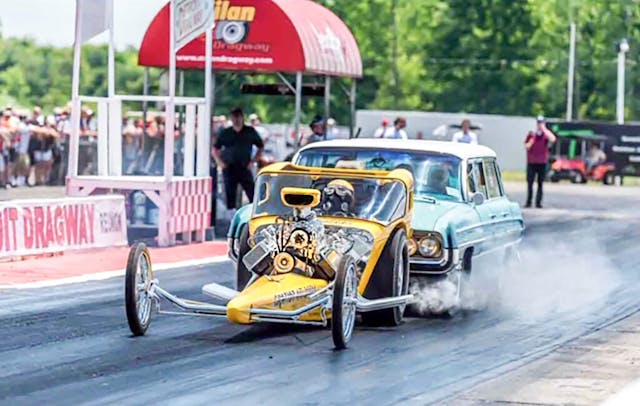
At some point in the mid-’60s, Al decided Aggravation II needed a nose piece that would cover the front of the chassis, a look that was becoming common on the most attractive Top Fuel dragsters. He asked a guy who had done aluminum work for Logghe how much it would cost. $300 was the answer. At the body shop where Al spent his days, that was three weeks’ pay, so he decided to do the work himself, bending the aluminum over a four-inch pipe. Soon he was doing almost all the aluminum work for Logghe-built dragsters and funny cars. Hundreds of aluminum race-car bodies and interiors later, he’s still using the 4-inch pipe to bend metal.
“I made a bench on which I could clamp the pipe down. Still have it. Still using it.”
Al built one more competition coupe, a ’23 Model T roadster on another Logghe chassis, powered of course by his big-inch blown Chrysler motor. Ahead of its time, this “coupe” sported a canopy much like those used on today’s Top Fuel cars. At the ’67 Winternationals in Pomona, California, he won the competition coupe class and another Best Appearing Car award. The ’23-based coupe would later win Super Eliminator at the .67 SpringNationals in Bristol, Tennessee.
Bergler didn’t always work at the same body shop; for a brief period, he ran his own outfit. “During the late ’60s, I had a shop on Gratiot,” said Al. “One day, ‘Diamond’ Jim Cavallaro of Diamond Racing Engines called and said that Tom Ivo was in town and needed a place to work on his car. I told Jim he would be welcome at my shop. Ivo is a great guy but he likes to sleep days and work nights. While working at night, he played loud music. Neighbors complained, and I lost that shop.
“But that started a thing where guys on tour with their race cars would stop by for some aluminum work or just to service their car and hang out. I learned a lot from other racers, and I think they benefited as well.”
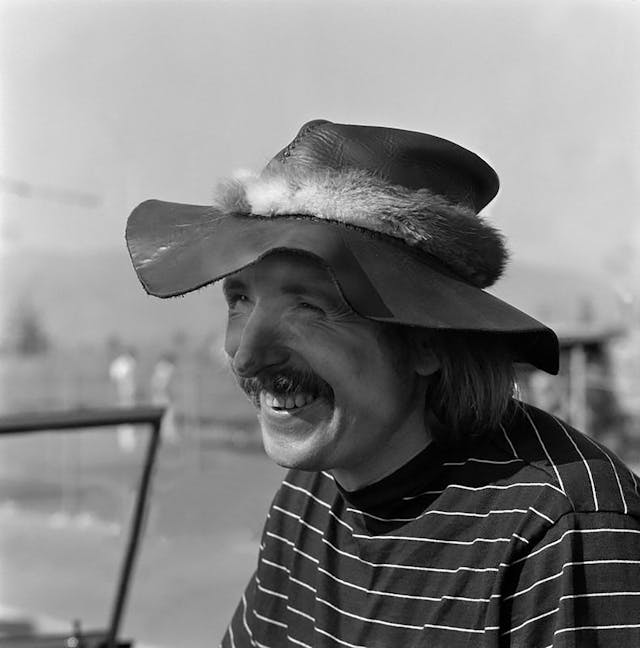
For 1970—now working from a shop on Groesbeck just around the corner from Logghe—Al remade the AA/Comp car as an AA Gas Dragster (AA/GD) with a digger-style body on the same underpinnings and raced to the runner-up spot at the 1970 NHRA Summernationals.
But the writing was on the wall. You couldn’t make much money with a gas dragster, and the fuel dragster boys with their faster, nitro-methane-burning cars weren’t doing much better. Funny Cars, on the other hand, were getting substantial appearance money from track operators all over the country, so Al teamed up with Tom Prock and built a Vega flopper on a Logghe chassis. Prock took the driver’s seat and Bergler handled the wrenches and build. A generation-two 426 Chrysler Hemi replaced the venerable gen-one Chrysler motor.
At first, Bergler and Prock drew blanks when trying to come up with a name for the car. Having previously rented out a corner of the shop to Pete Seaton and his funny car, named Seaton’s Shaker, they drew inspiration from that team. Thus was born the Motown Shaker, a funny car that would serve Bergler well for years to come. Prock, however, got an offer he couldn’t refuse—a chance to drive the Castronovo family’s Custom Body funny car—and left for the East Coast. Butch Maas then took the driver’s seat of the Motown Shaker, with Al filling in from time to time.

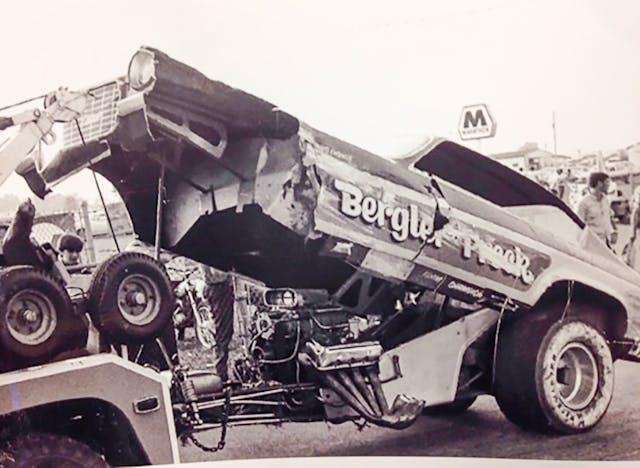
Most of the team’s appearances were match races, because that’s where the dollars were in the early ’70s, with the occasional national event rounding out the schedule. The Motown Shaker was a regular at the storied eight-car flopper shows held Wednesday nights at the U.S. 30 drag strip in Gary, Indiana. At one of those events, the blower exploded at half track, breaking the roof supports and leaving Al blinded. He recalls trying to spin the car out. Instead, it made a hard right turn and headed off between the light poles and out into a field. It continued across the field, which tore up the car a bit before it rolled to a stop. The track safety people couldn’t find Al and the car. He recalls standing up next to the broken car, shouting and waving his arms until he got their attention.
At some point during those profitable days of funny car racing, Al’s son Ron Bergler came on board as a wrench and crewman. In ’73, Al took over the driver’s seat full time and a Mustang body replaced the Vega’s. In ’77, the Mustang gave way to a Corvette, and in ’80 a Firebird became the last Motown Shaker.
“The match race money was drying up,” Al said, “and it was time to focus on my business.” Al brought the curtain down on his career as a pro racer, but his contributions haven’t gone unnoticed. He’s a member of both the Michigan Motor Sports Hall of Fame and the International Drag Racing Hall of Fame. NHRA has also recognized his work, honoring him with a Lifetime Achievement Award.
Racing a funny car full-time in the ’70s meant you would spend far more days on the road than at home, leaving little time for anything else. So with those days behind him, Al decided that in addition to focusing more on his race car fabricating business, he would devote more time to his personal life, and he soon married his high school sweetheart, Nancy, who has now been Mrs. Bergler for some 40 years.

Al and Nancy bought a beautiful home in a forested neighborhood in Shelby Township, Michigan. A large pole barn behind the house serves as Al’s shop. Touring racers still stop by. Bob Pacitto, who worked for Logghe and has driven top drag cars including some for Connie Kalitta, stops by every day to hang, do some bench racing, and lend a hand on a job when needed. Although Al, at 87, is taking on less work, he’s still building race car bodies. When this reporter stopped by to see Al just after Christmas, Al was building a nosepiece for a customer’s dragster.
Although he hasn’t raced in over 40 years, All has done a lot of cackle tests, events where nitro-burning supercharged cars are started so the fans can hear the wonderful sound of the monster motors. At many events, dragsters and competition coupes are push-started, just as they were 60 years ago, adding an extra bit of old-time flavor. Al has cackled the Ridler-winning Aggravation II, along with various dragsters.
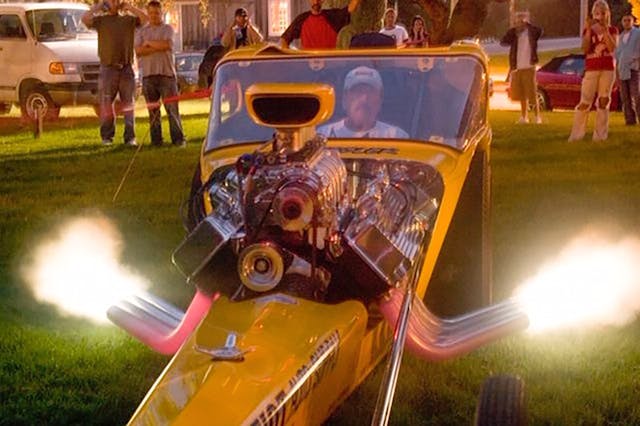
Al credits Ed Golden, a former Ford designer, with getting him involved. Golden had purchased the Probe AA/FD and took it to Al’s shop for restoration. When NHRA staged a cacklefest at the 2003 Hot Rod Reunion in Bowling Green, Kentucky, Golden asked Al to sit in the car and start it as it was pushed down the track. Al managed to wiggle into the seat of that old fueler and took the wheel. At the right moment, he clicked on the magneto switch and the fuel-burning supercharged Chrysler engine roared to life.
“It was an emotional experience,” said Al. “It’s like I was young and taking on the best at 200 mph with the sound of the exhaust pounding in my eardrums and flames shooting skyward to either side of me. I was overcome by memories of great times.”
“I was awe-struck; it was like I had been reborn,” he says. “When it was over, I was crying. I tried to call Nancy to tell her about it, but could barely speak.”
“’Call me back when you get yourself together,’ she said.”
***
Check out the Hagerty Media homepage so you don’t miss a single story, or better yet, bookmark it. To get our best stories delivered right to your inbox, subscribe to our newsletters.
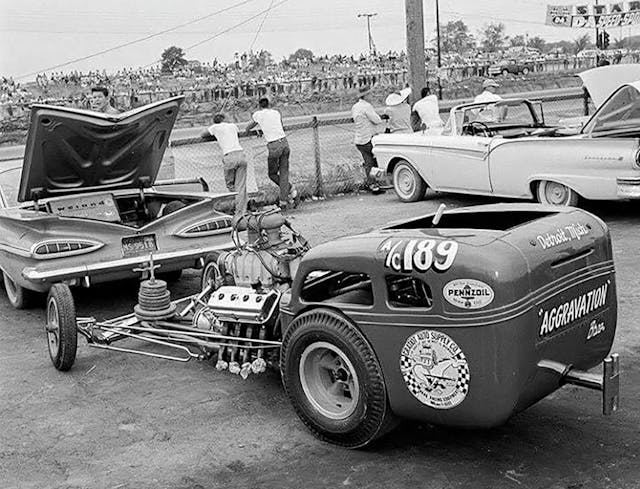

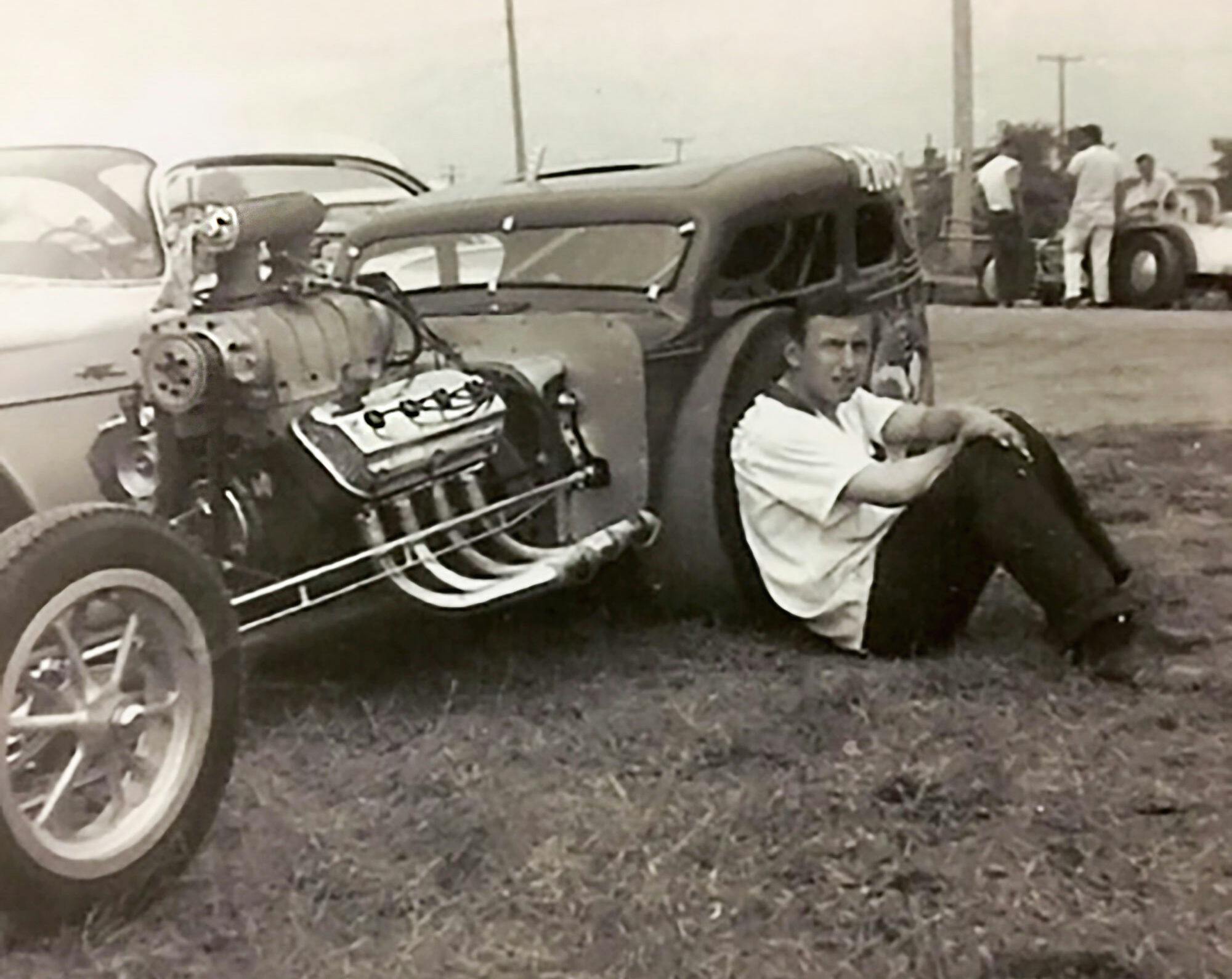
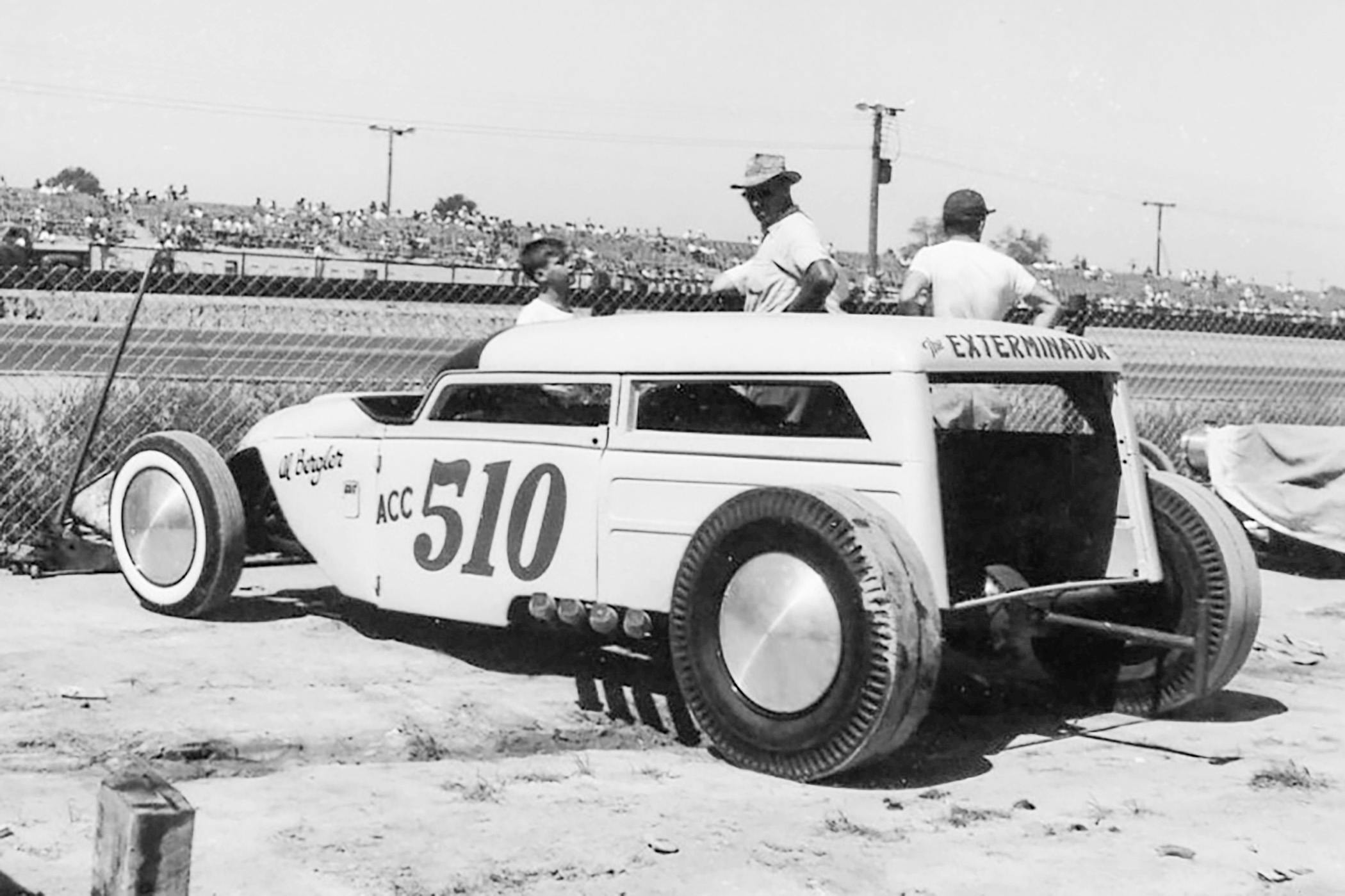
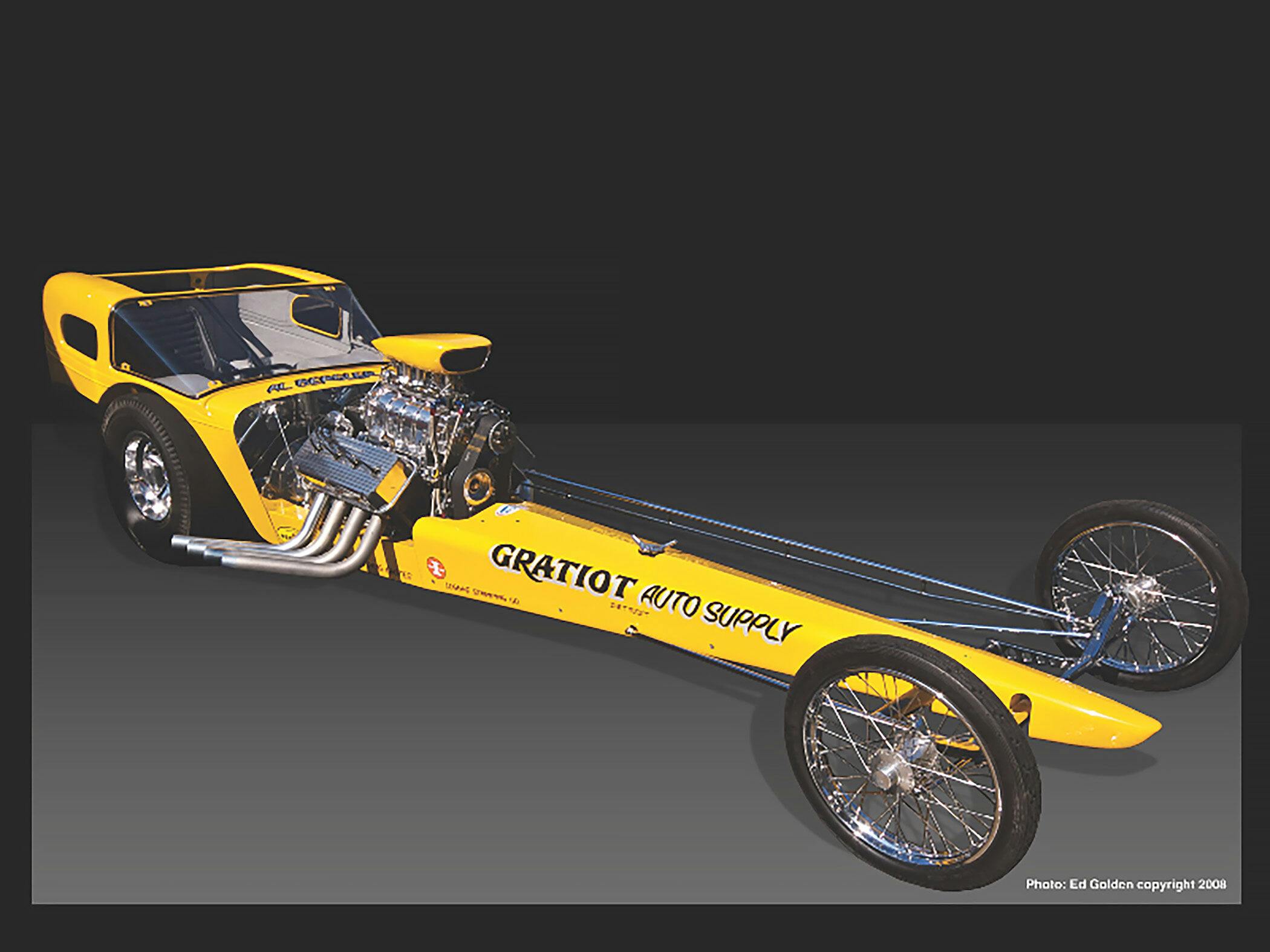
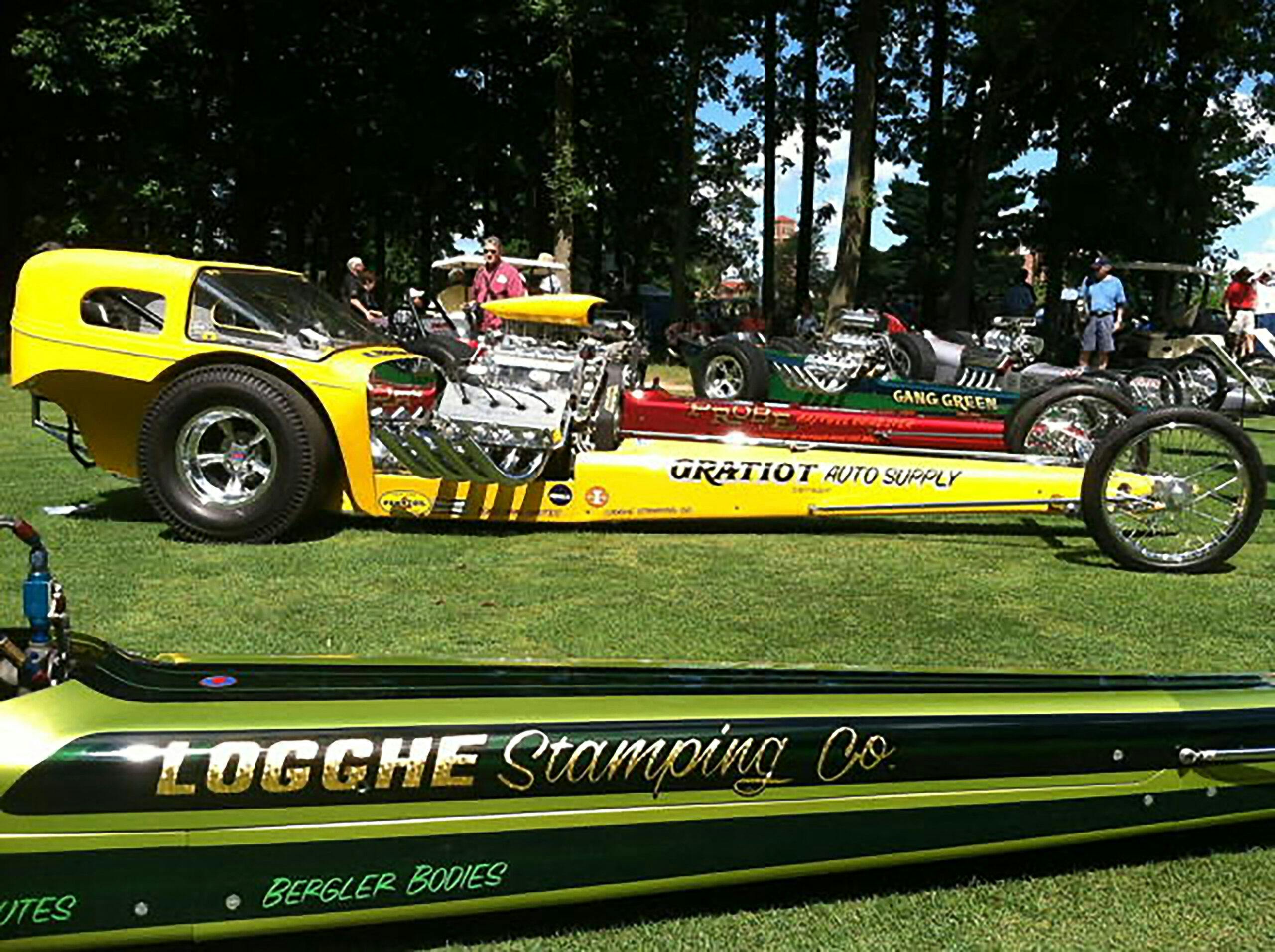

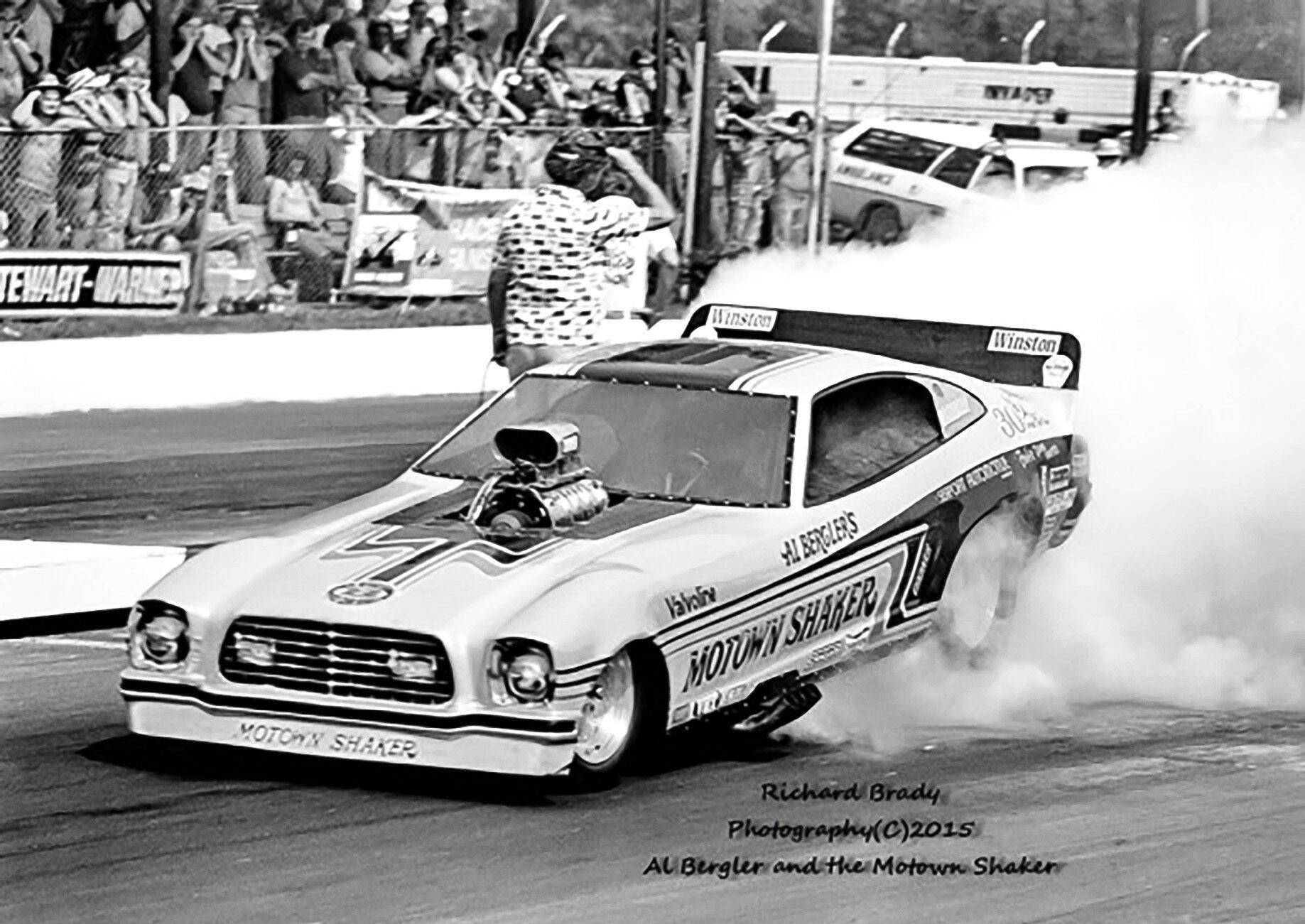
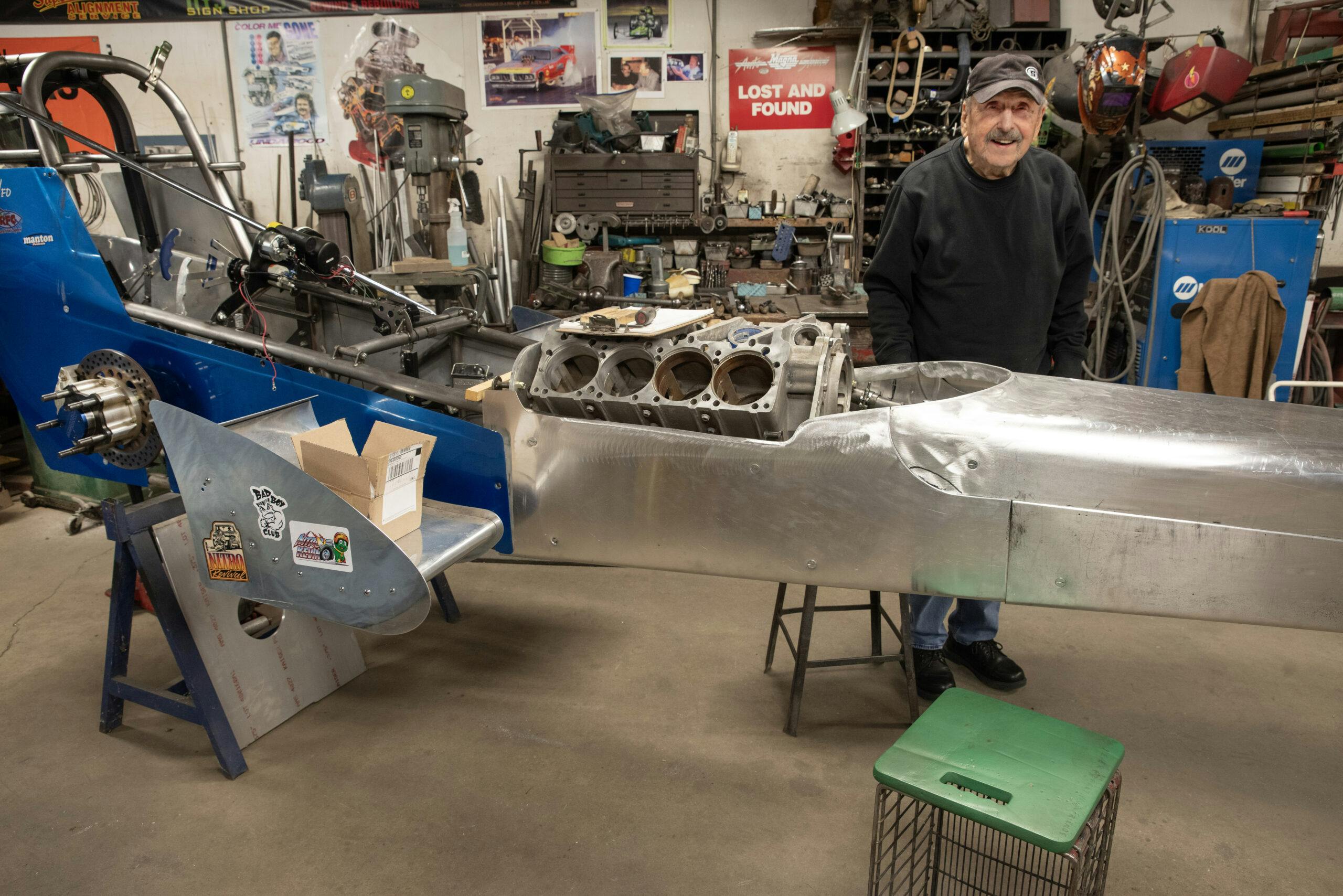
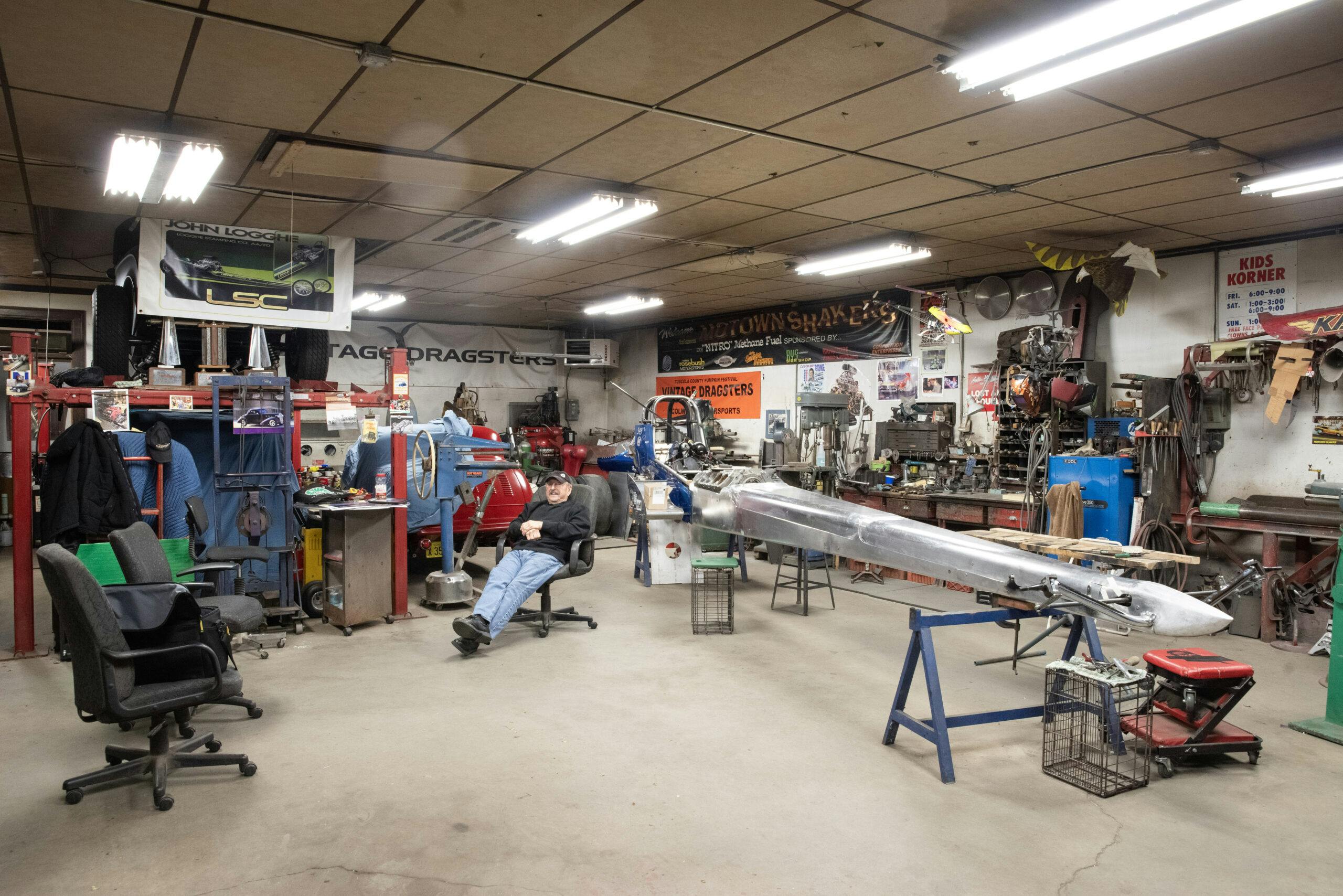



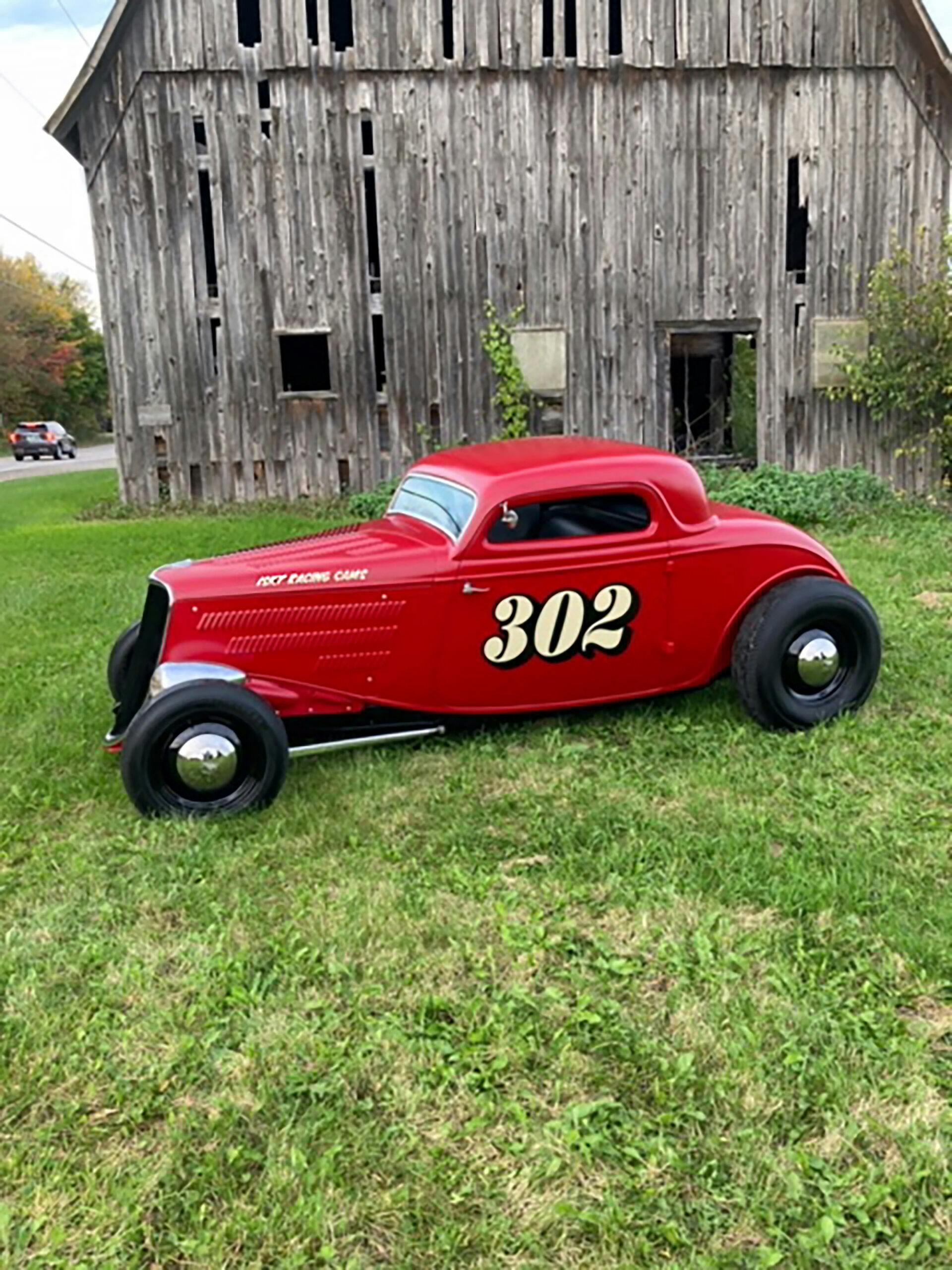
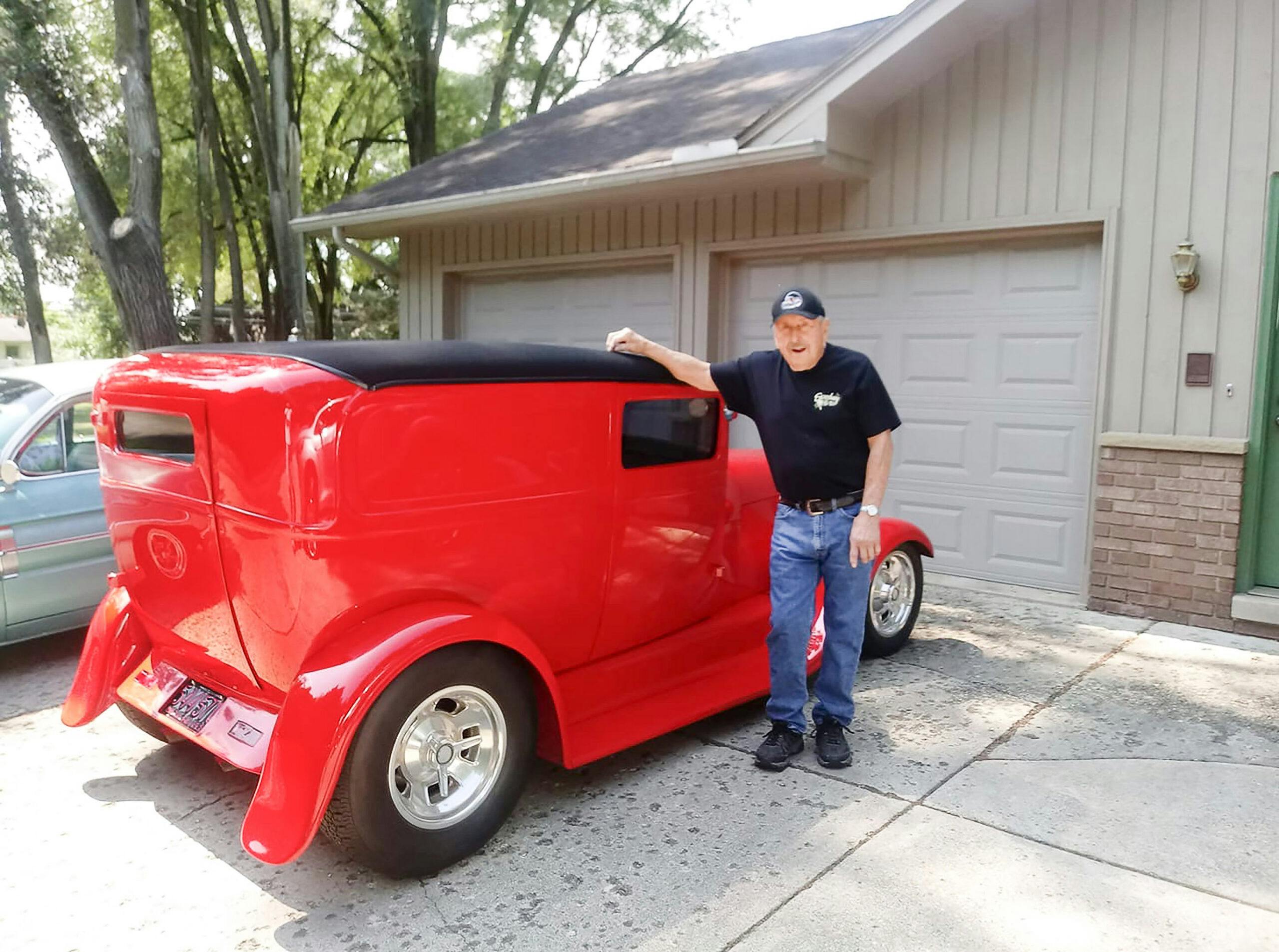
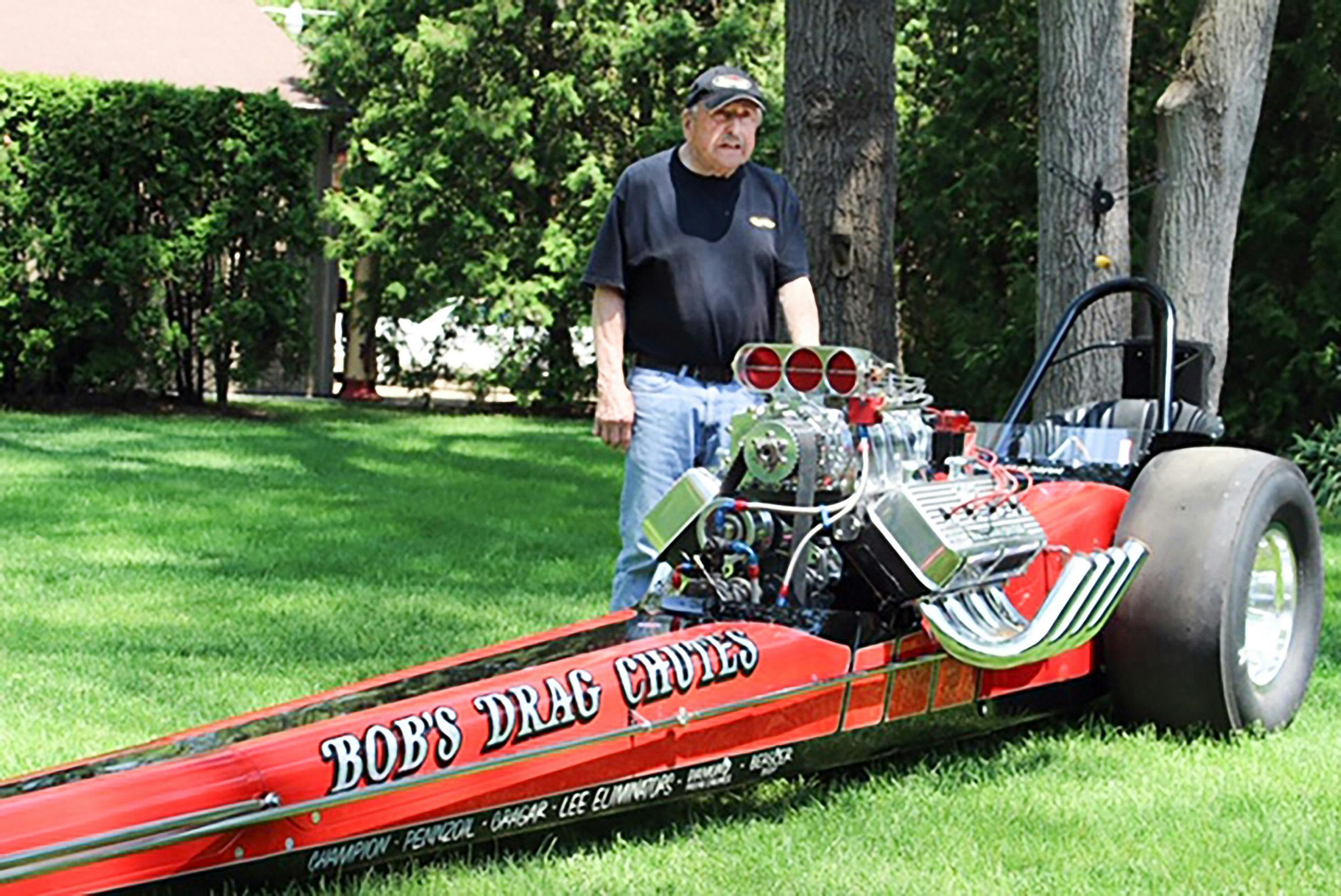
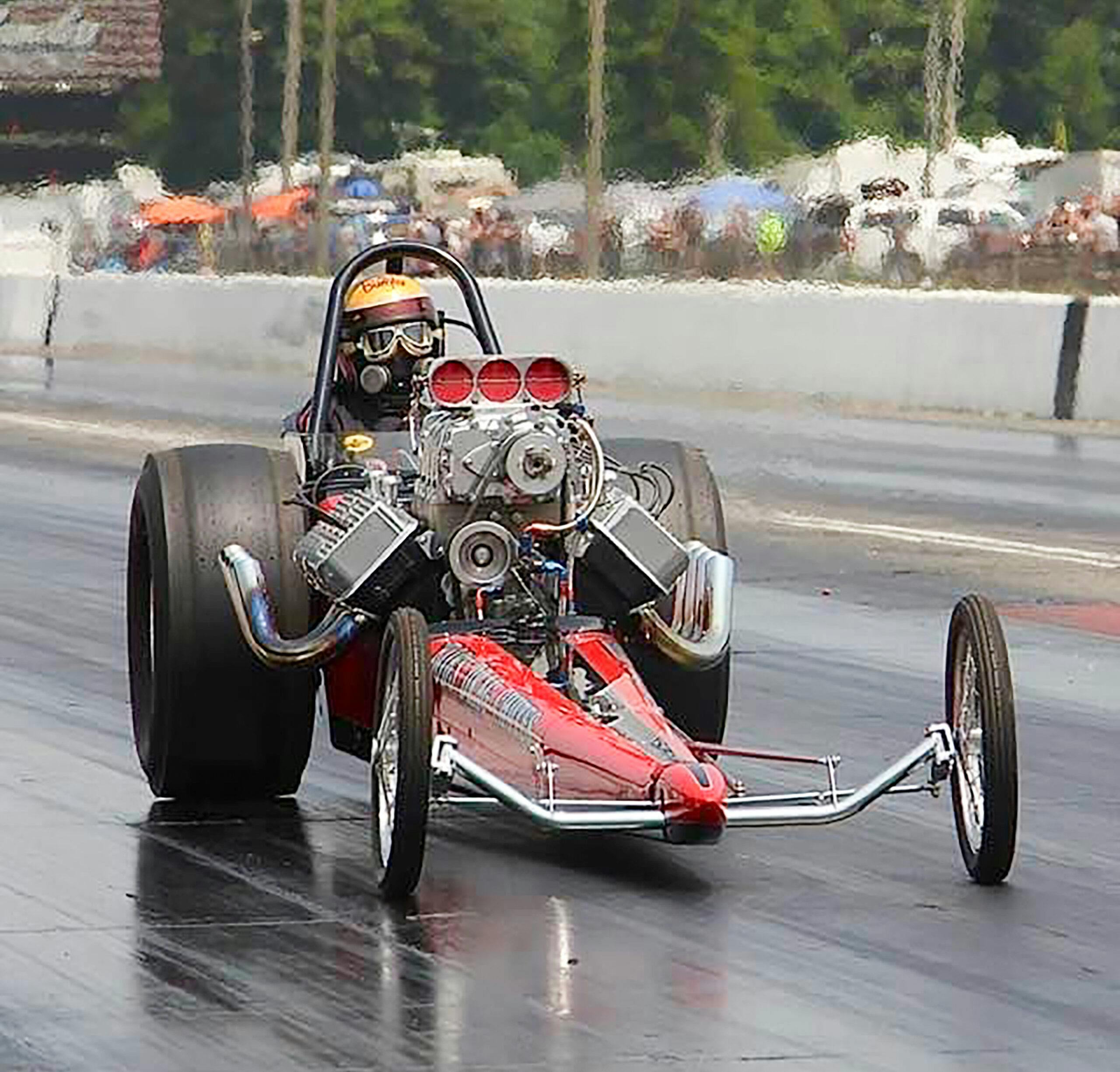


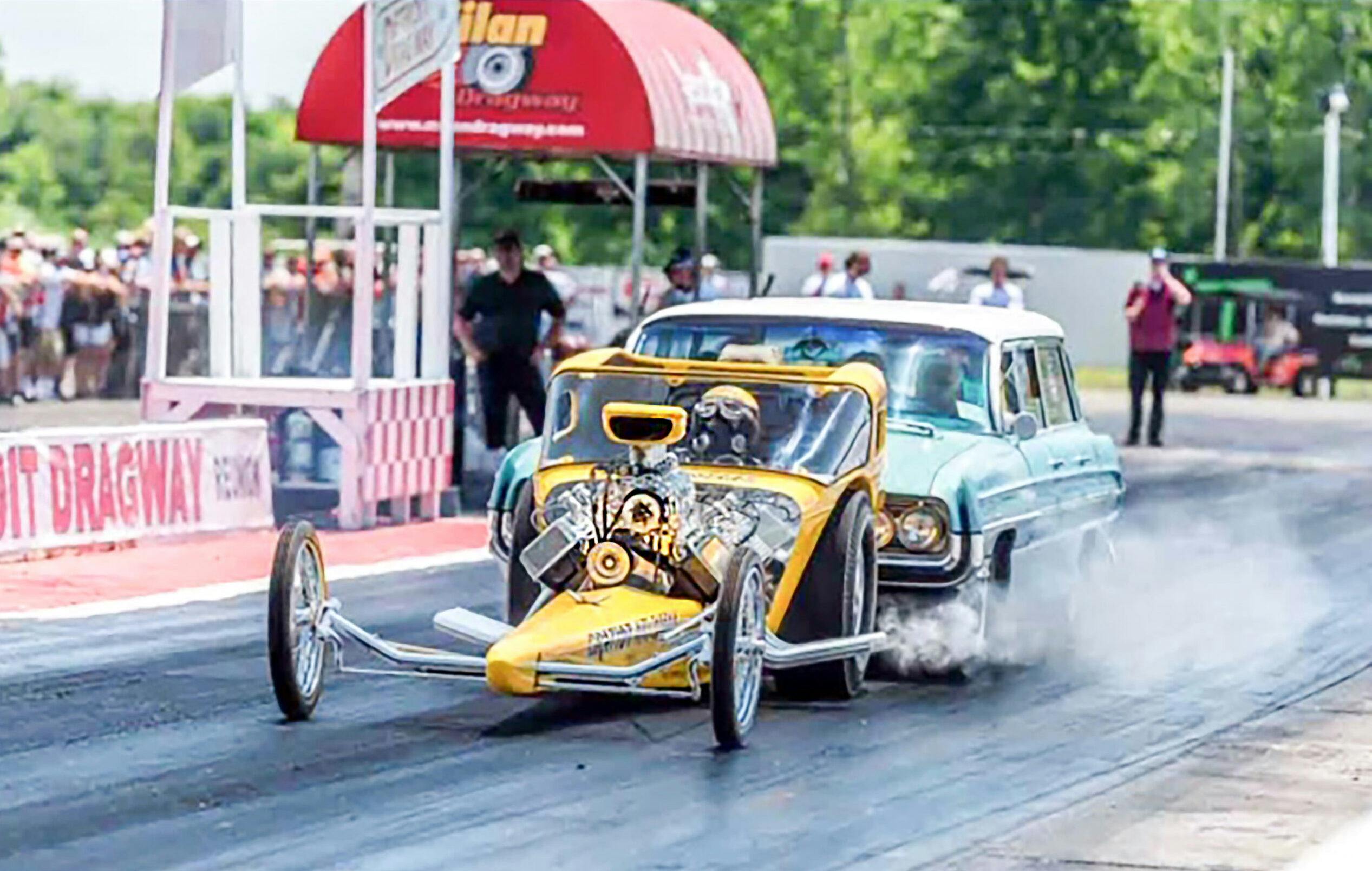
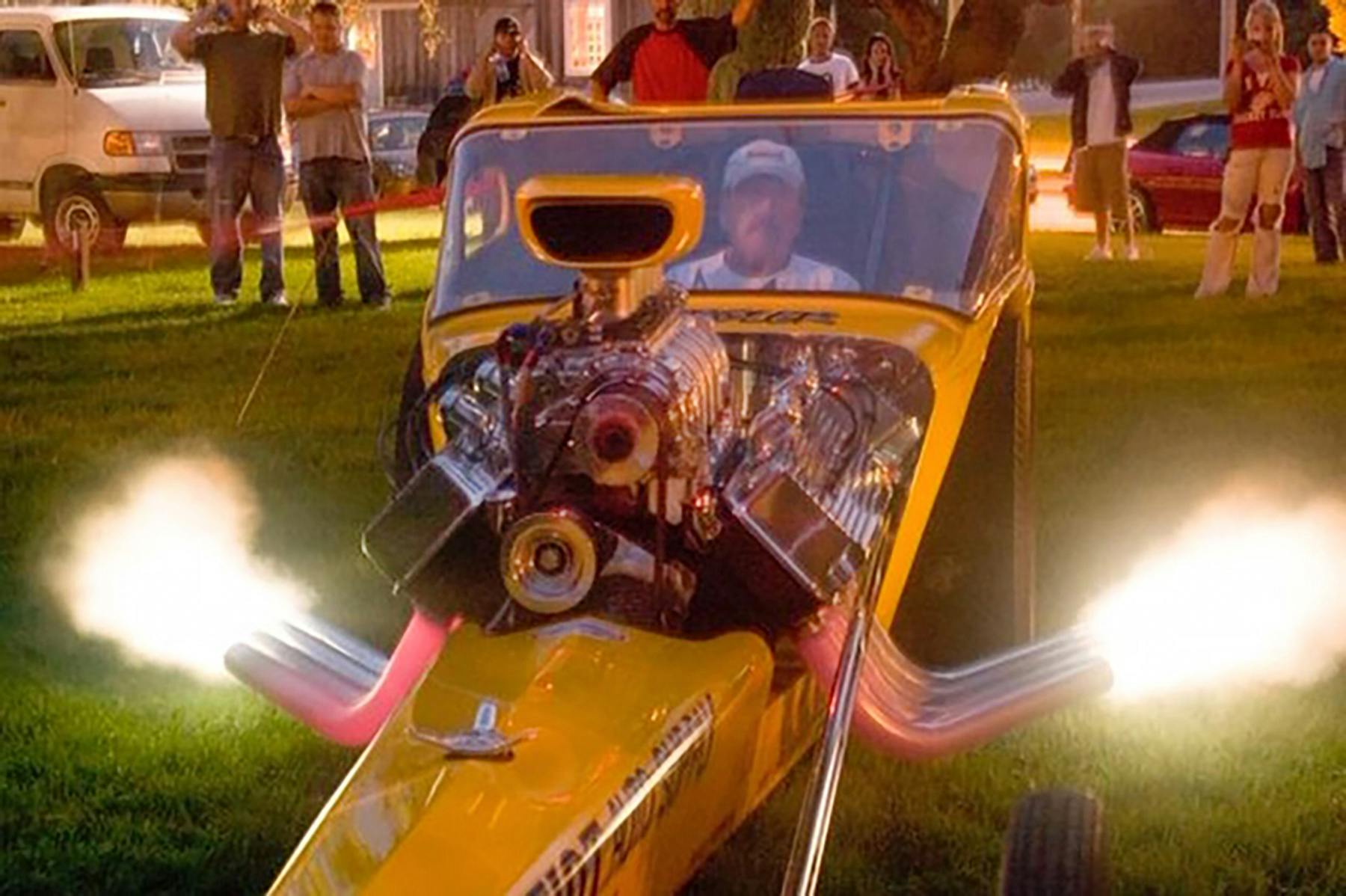
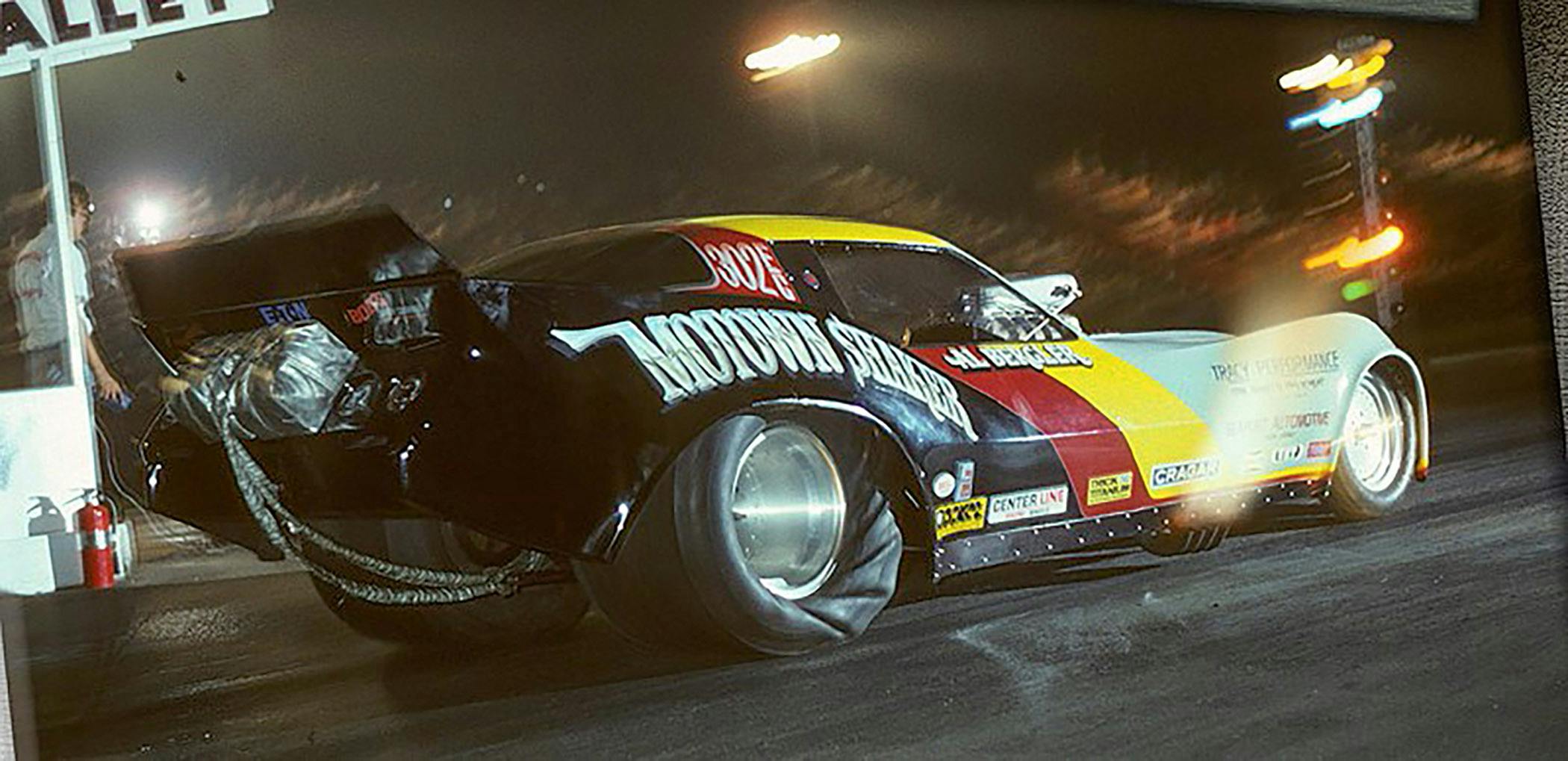
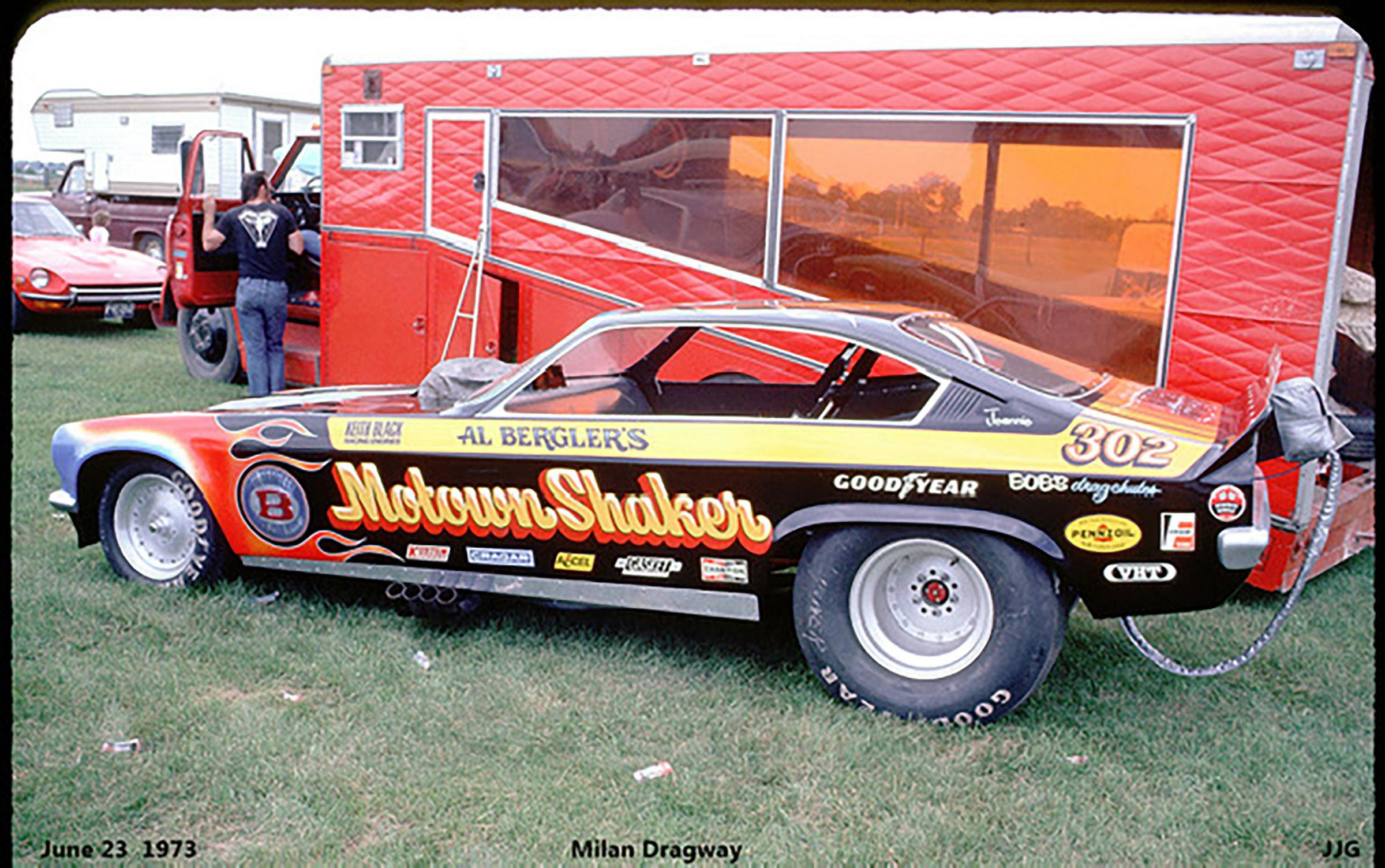
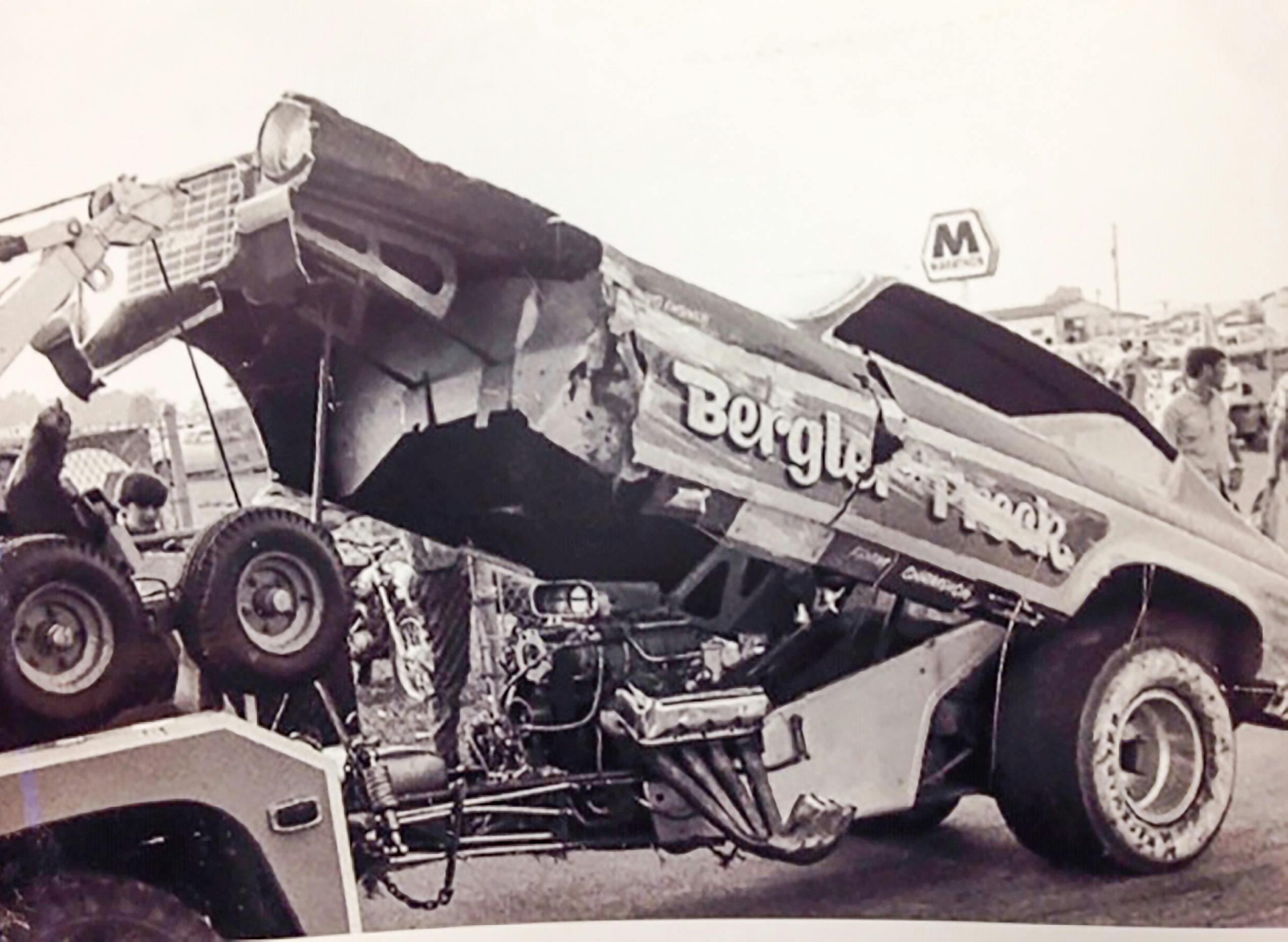

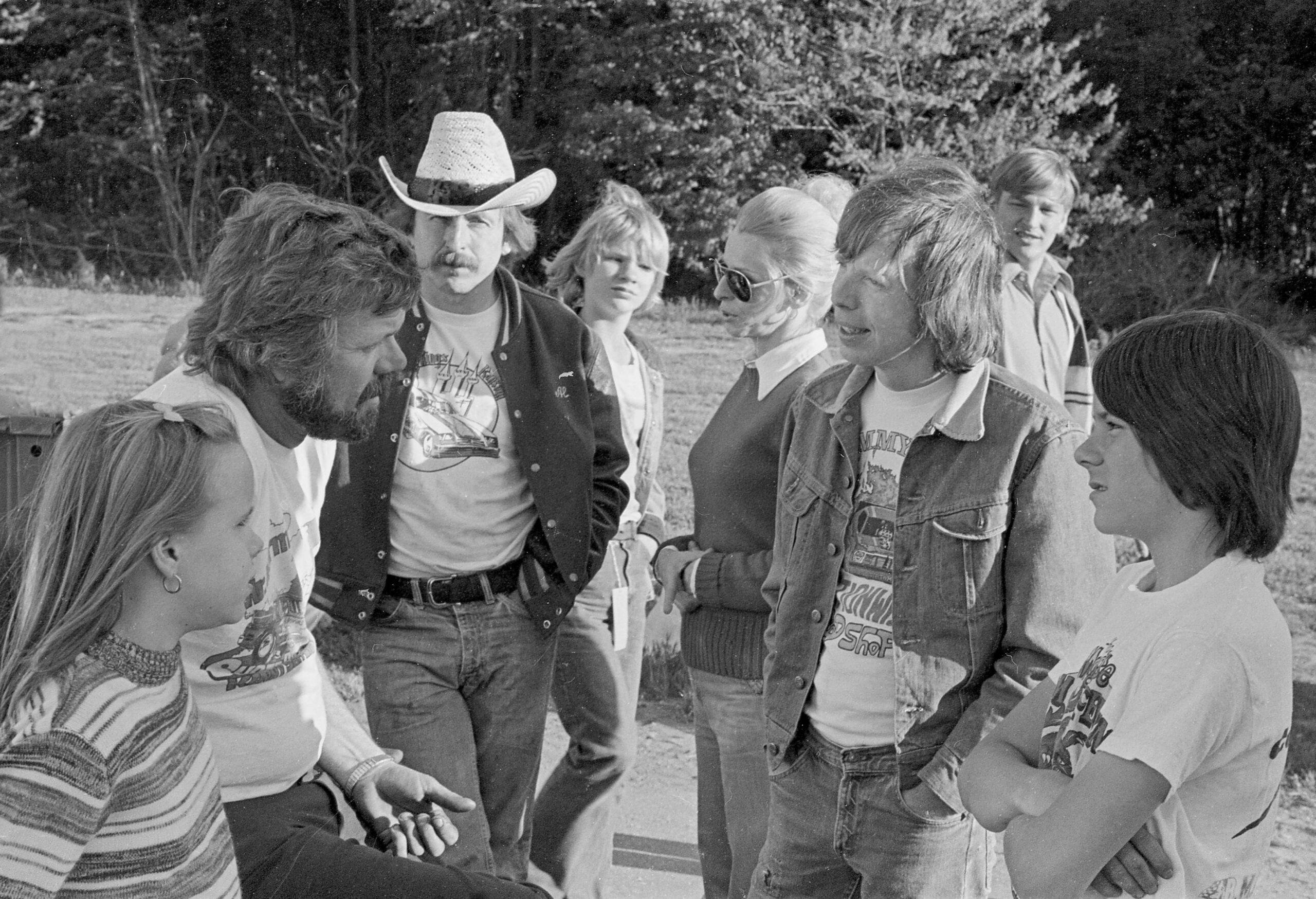
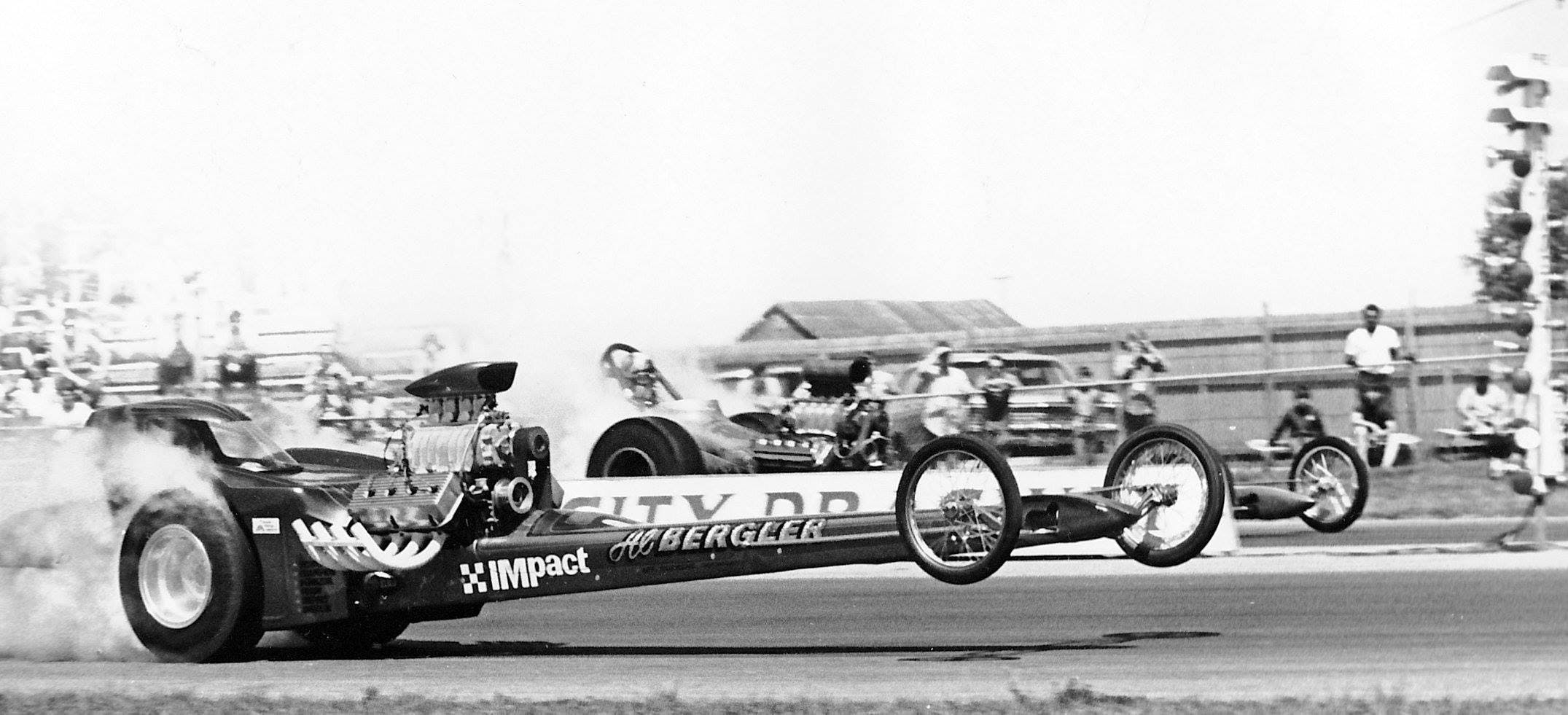

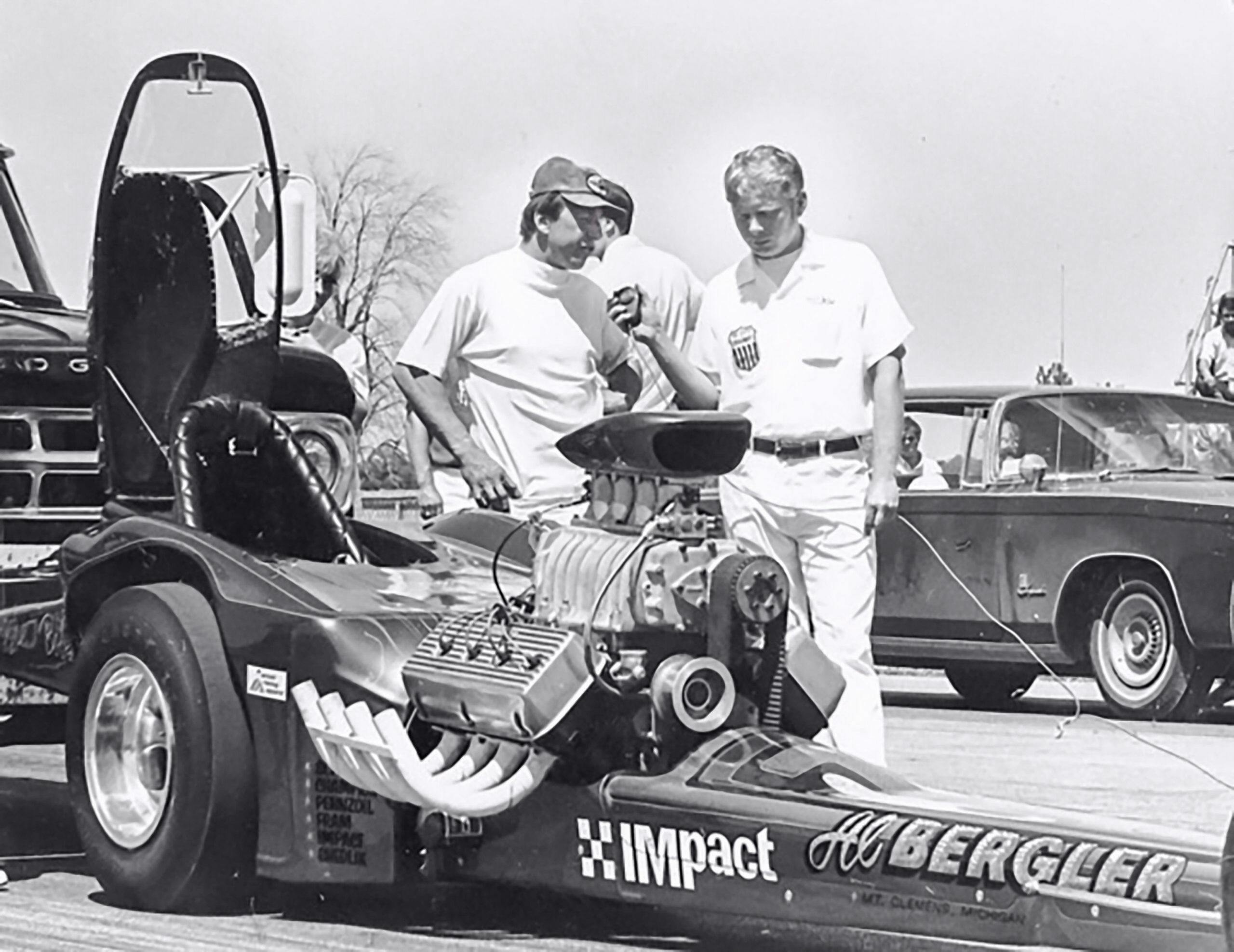

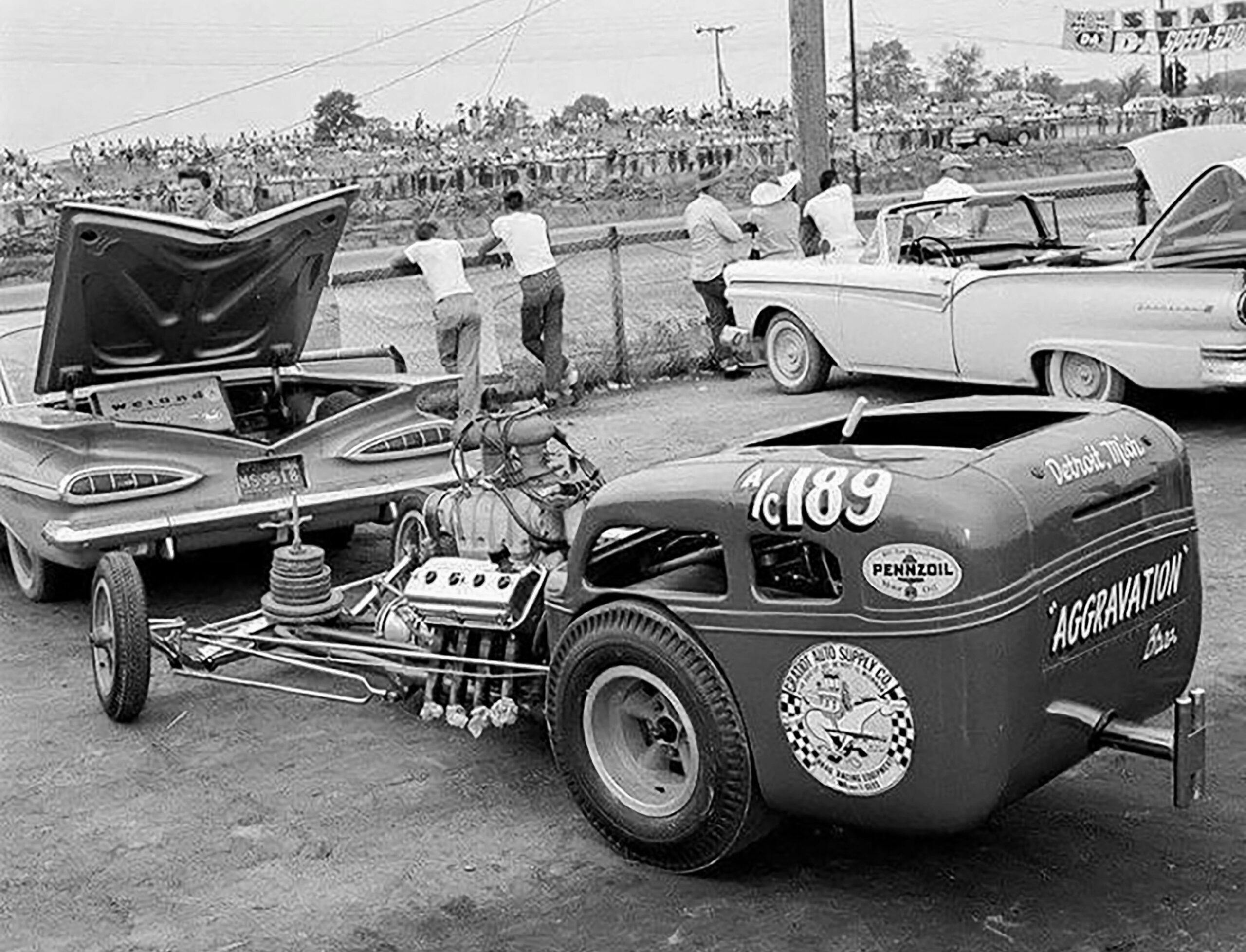
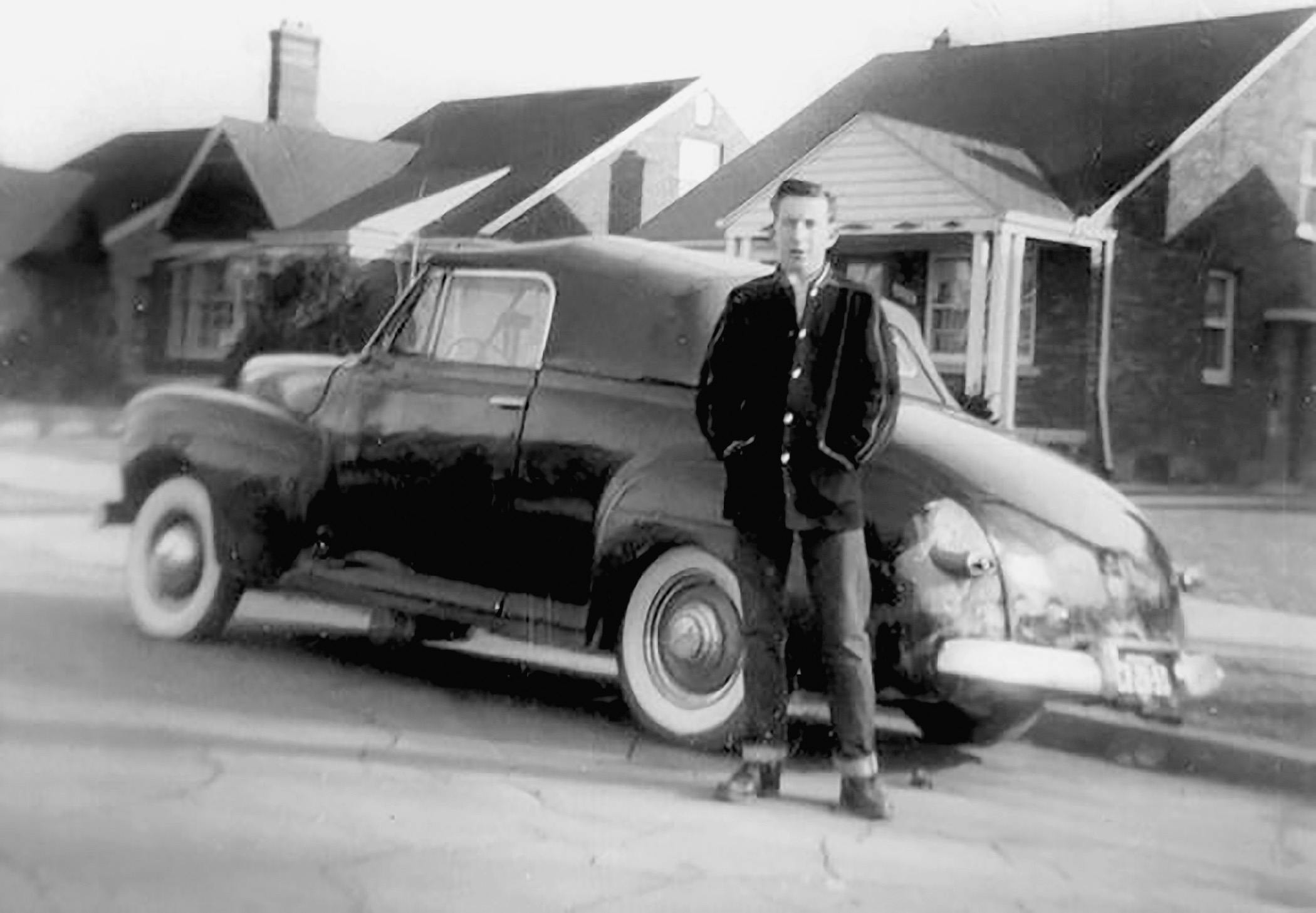
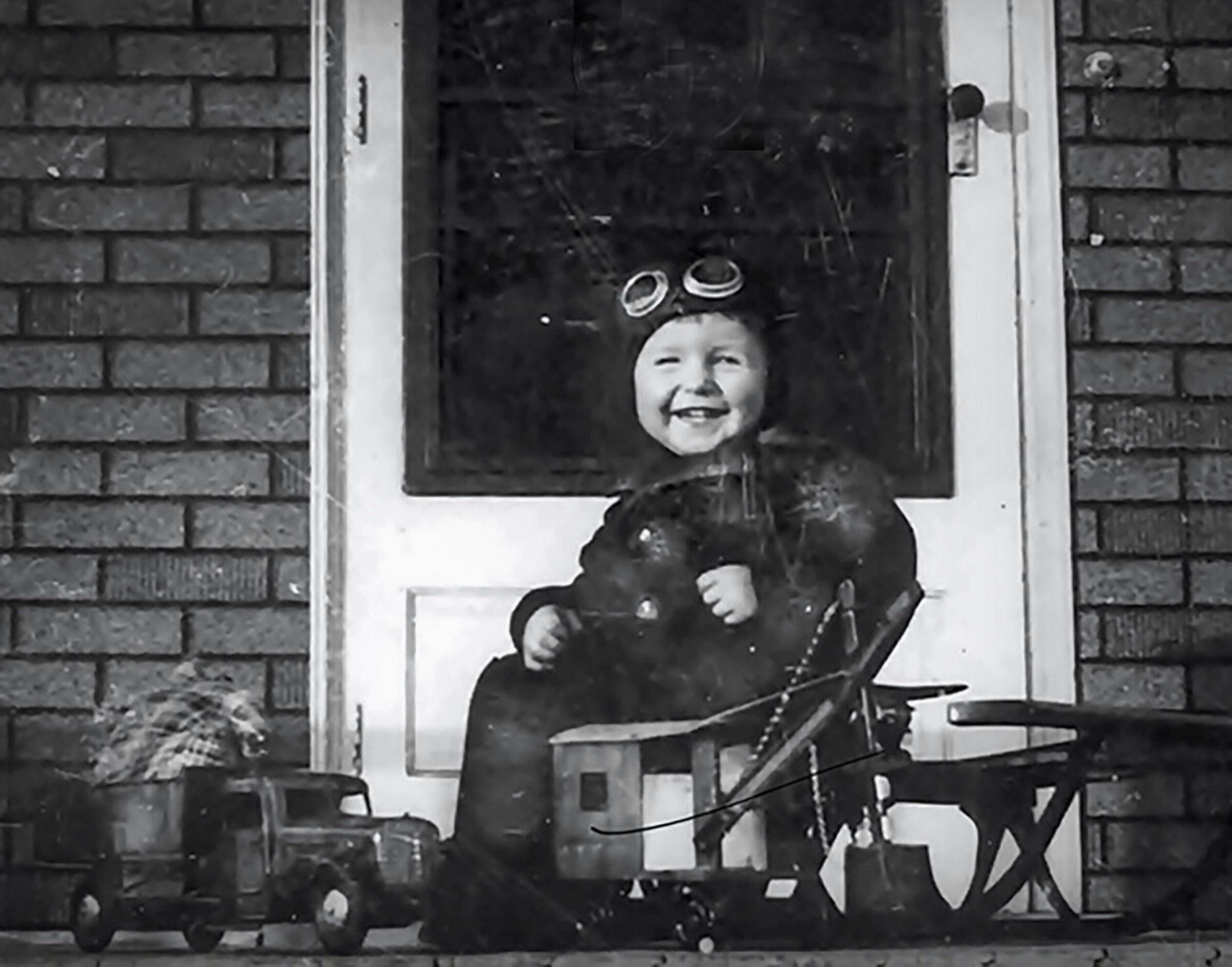
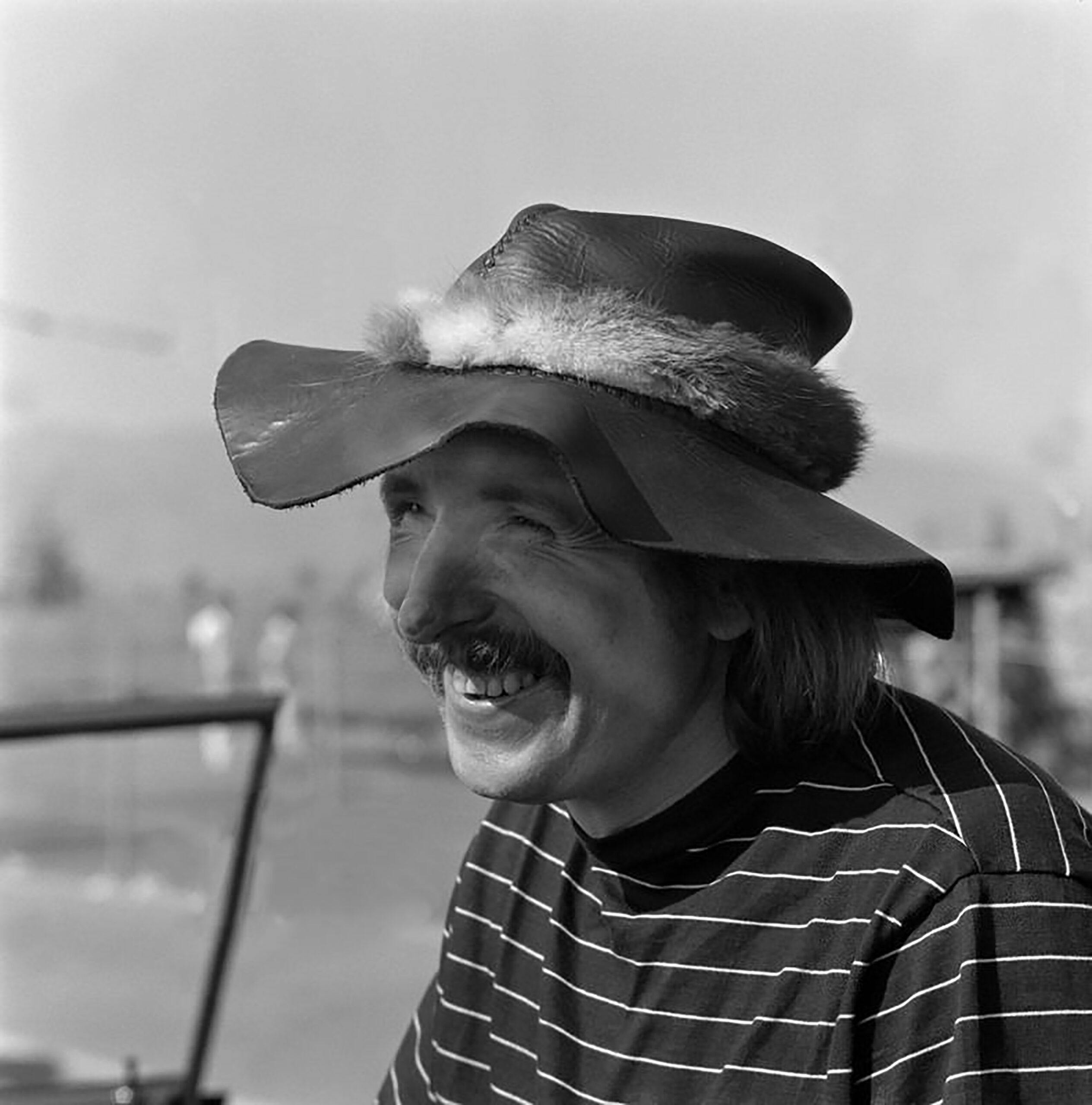


Great story and photos! I remember Al well – or at least I remember about him, we never met. When I was racing in the late ’60s and early ’70s, he was well known. The coupes, dragsters and especially the Motown Shakers were seen often at the big races, and mentioned in all the drag magazine reports of the day. I had no idea he was still working on cars, but I’m glad to know it now!
I love looking at these cars. This era everything was open to try. I lived the barbell weights on the nose of the #1 car.
Fantastic story. I try not to get too wrapped up in nostalgia, but this really captures that era and region well. A time when a semi-privateer could make a mark, make friends, and have good time doing it. Time passed differently then, and I miss it.
This is what I make time to read, and it made my day. Takes me back 50 years to what may have been had I realized how to benefit from intestinal fortitude. All of the builders and racers names mentioned, ring the bells loudly in my memory bank. Keep on building Al !
Okay … I have to proudly say … that’s MY dragster Al just completed for me. I can’t even begin to tell you how happy and honored I am to have met him, been to his shop, and to actually have a Hal Canode built dragster that Al Bergler hand fabricated a Nostalgia body for me, and this machine. Super down to Earth guy. Prior to stumbling upon this dragster ( having never raced in my life and very rarely do I even drive over the speed limit, lol ) I must confess I had never heard of Al Bergler before. Sorry, I lived a sheltered life. Mr. Bergler has been just the absolute best one could imagine. especially in my position. Knowing I have absolutely NO knowledge of what I’m doing at all Mr. Bergler has been more than kind and I just instantly put my trust in him regarding this project. I hope to recieve training and learn how to drive it. I hope to run this car at National Trails Raceway near my home in Ohio and to realize a long distance vision, dream, and desire. I’m not looking to set any records, just to have the opportunity of scratching the surface of a motorsport that has been a lifestyle and culture for so many motorheads, builders, fabricators, and racers that I admired from afar. Having idolized the drag racing scene only through magazines and movies as a youngster I jumped at the chance to purchase the dragster. The then owner knew Al and reached out to Al for me as the previous owner’s father was a top level driver on the scene up in the Michigan area from back in what we all would call the Golden Days of drag racing. To say I’m honored … just doesn’t seem strong enough. To say that I’m excited, overjoyed, and pumped up? Those words don’t seem strong enough either. So, “Thank you” Hagerty for this story that I just now stumbled upon as well. And “Thank you more than you know Mr. Al Bergler for being the dude that you are and for bringing your very best to the racing culture, the superior craftsmanship of the cars in the motorsport and the hot rodding world. I’m very proud to own a piece of your automotive art work.” Oh, by the way for those reading this ( I’ll let you in on a secret but, only if we can keep it to ourselves ) … Mr. Al Bergler and his buddy are actually delivering the dragster to my shop for me. Am I dreaming? Very thoughtful and very cool dudes … How I feel right now … like that 10 year old kid did back in 1968 diving into the hot rod magazines on Christmas Day … Once again, “Thank you sir… and I’ll see you around noon. I’ll be the guy standing in the parking lot waiting with a smile. Drive safe…”
I purchased a 1937 ford coupe 3 years ago that some of the work on this car was done by Al. I would like to speak to him or get in contact info .
Possible get an autograph on the glove box door . Thanks